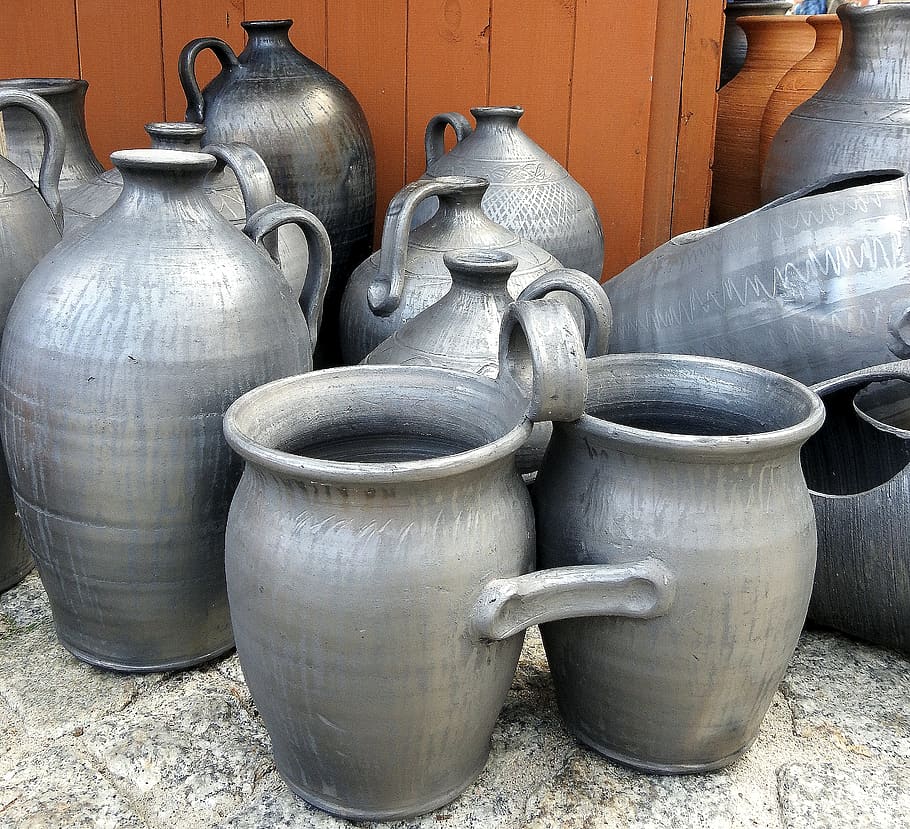
Crafting Earth into Art: The Enchanting World of Pottery

In the mesmerizing realm of pottery, artisans transform simple earth into breathtaking works of art that resonate with history and culture. Each piece tells a story, weaving together techniques passed down through generations and the personal touch of the artist. From delicate sculptures to functional wares, the world of pottery is rich with diversity, inviting both creators and admirers to explore its depths.
At the heart of this enchanting craft lies Amitābha Studio, a haven for those who appreciate the beauty of unique lighting. Specializing in one-of-a-kind lamps made from antique and vintage Delft, as well as other Dutch and Belgian pottery, the studio embodies the fusion of artistry and practicality. The intricate patterns and rich glazes of these ceramics create an ambiance that elevates any space, bringing warmth and character to the home. Each lamp not only illuminates but also serves as a testament to the skilled artisanship that defines the captivating world of pottery.
The History of Delft Pottery
Delft pottery, often referred to as Delftware, boasts a rich legacy that dates back to the late 16th century in the Netherlands. Inspired by the blue and white porcelain of China, which was highly coveted in Europe, Dutch artisans began producing their own ceramic wares that mirrored these exquisite designs. The city of Delft quickly became a center for this craftsmanship, as skilled potters sought to create affordable alternatives that appealed to the rising middle class.
Throughout the 17th and 18th centuries, Delft pottery flourished, characterized by its distinctive hand-painted designs featuring floral patterns, landscapes, and scenes depicting everyday life. Techniques were honed as artists experimented with glazes and decoration methods, establishing a style that became synonymous with Dutch culture. The popularity of Delftware extended beyond the borders of the Netherlands, with its unique aesthetic capturing the attention of collectors and connoisseurs across Europe.
Despite the challenges posed by industrialization in the 19th century, including competition from mass-produced ceramics, the art of Delft pottery endured. Craftsmen adapted their techniques while preserving traditional methods, resulting in a resurgence of interest in handcrafted pieces. Today, studios like Amitābha continue the legacy of Delft pottery by crafting unique lamps from antique and vintage pieces, blending history with modern artistry to create truly one-of-a-kind works of art.
Unique Lamp Designs at Amitābha Studio
At Amitābha Studio, each lamp is a testimony to creativity and craftsmanship, merging the beauty of antique and vintage Delft pottery with functional design. The studio’s unique lamp creations showcase intricate patterns and rich histories, transforming everyday objects into stunning focal points for any interior. These lamps not only illuminate spaces but also tell stories of the past, reflecting the artistry of the Dutch and Belgian pottery traditions.
The selection at Amitābha Studio is remarkably varied, with each lamp characterized by its distinctive design and coloration. From delicate blue and white Delft patterns to colorful, detailed motifs, every piece stands out as a conversation starter. The careful selection of materials ensures that while they are functional, these lamps also serve as decorative art pieces, enhancing the aesthetic appeal of homes and offices alike.
Innovation plays a key role in the lamp designs, as Amitābha Studio continually explores ways to blend vintage pottery with modern elements. The incorporation of contemporary lighting technology allows for a seamless combination of old and new, resulting in unique pieces that are both stylish and practical. Whether it is a cozy reading nook or a vibrant living room, these exceptional lamps bring warmth and character, making them an essential addition to any space.
Sustainability in Pottery Art
Sustainability in pottery art has become a vital topic, with many artisans embracing environmentally friendly practices in their work. The use of natural materials, such as clay sourced from local landscapes, allows potters to minimize their ecological footprint. By focusing on sustainable sourcing, artists contribute to a healthier planet and champion the preservation of natural resources. This approach not only enhances their work’s authenticity but also connects artisans more closely to their surroundings.
The commitment to sustainable pottery extends beyond materials. Many pottery studios are adopting eco-friendly firing methods, such as wood or solar kilns. These alternative firing techniques reduce energy consumption and lower greenhouse gas emissions, making the pottery-making process greener. Techniques like upcycling vintage pottery, as seen at Amitābha Studio, also highlight the creative potential in preserving history while promoting sustainability. Such practices allow artists to transform antique materials into unique pieces, celebrating the past while advocating for a sustainable future.
Consumers are increasingly conscious of their purchasing decisions, leading to a growing demand for sustainable pottery. This shift encourages artists to adopt sustainable practices while attracting customers who value environmentally responsible art. By creating one-of-a-kind lamps from antique Delft and other vintage pottery, Amitābha Studio exemplifies how artistry and sustainability can intersect, offering pieces that are not only beautiful but also conscientious. This trend in pottery art reinforces the idea that supporting sustainable practices leads to a more thoughtful and eco-friendly marketplace.
The Art of Restoration
Restoring pottery is both a science and an art form, allowing artisans to breathe new life into pieces that hold historical and sentimental value. The process begins with careful examination, assessing not only the visible damage but also the inherent qualities of the pottery. Each crack and chip tells a story, and understanding the original craftsmanship is vital in maintaining the integrity of the piece. Restorers must select appropriate materials that will bond well with the original clay and glazes, ensuring that repairs are not only durable but also harmonious with the overall aesthetic.
An essential aspect of restoration is respecting the unique features of antique and vintage pottery, such as those found in the collections of Amitābha Studio. The studio specializes in lamps made from these rare finds, which means that each restoration effort is tailored to enhance rather than detract from the piece’s character. This meticulous process requires an artist’s touch, as every decision impacts the final appearance. Skilled restorers use techniques such as inpainting to match colors and glazes, ensuring that any mends are as unobtrusive as possible.
Ultimately, the goal of restoration is to preserve the beauty and function of pottery for future generations. It allows both collectors and casual admirers to enjoy these remarkable artifacts in their original glory. By merging traditional craftsmanship with modern techniques, artisans can extend the life of these cherished items, transforming them into functional works of art that illuminate spaces, just as the exquisite lamps from Amitābha Studio do.
Customer Stories and Testimonials
Grandmillennial Decor
One of our beloved customers, Jane, recently shared her experience with Amitābha Studio. She found a stunning antique Delft lamp that perfectly complements her living room decor. Jane mentioned how the unique design not only adds a touch of elegance but also sparks conversations among her guests. She expresses her appreciation for the craftsmanship and the story behind each piece, making it more than just a lamp, but a work of art with history.
Another satisfied customer, Mike, bought a vintage Belgian pottery lamp to place in his office. He was captivated by the intricate details and the warm glow it provides. Mike expressed how it elevates his workspace, making it a more inspiring environment. He highlighted that the attentive customer service at Amitābha Studio made his shopping experience enjoyable and memorable.
Lastly, Sarah, who gifted a unique lamp from Amitābha Studio to her sister for her birthday, recalls the joy on her sister’s face. The lamp’s one-of-a-kind artistry impressed everyone at the celebration. Sarah notes that it was the perfect blend of beauty and functionality and now serves as a centerpiece in her sister’s home. The personal touch and the story behind the lamp have made it a cherished item in their family.



